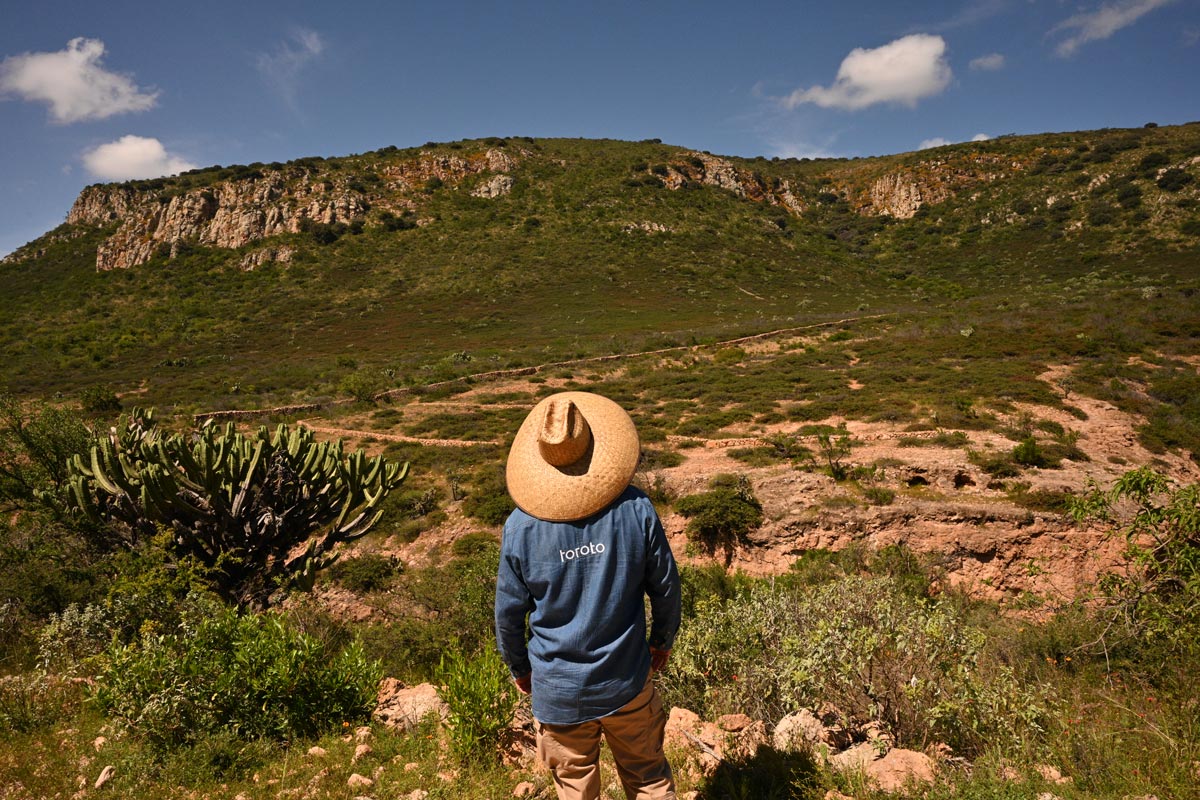With Our Boots on the Ground: Insights Shaped by Six Years of Up-Close Climate Action



Where does climate action really happen? It depends, because it doesn’t look the same to everyone.
Climate action doesn’t unfold in a single place, but rather in the intersections where decisions, conversations, and efforts from different fronts meet, aligned by the same purpose: securing a sustainable present.
At Toroto, we understand climate action as a collective puzzle in which every decision, every effort, and every participant contributes a piece: from those who steward and understand the land, to those who invest resources, share knowledge, or shape public policies to make it possible. And just as climate action takes different forms for different people, for us it begins with our boots on the ground.

To mark Toroto’s sixth anniversary, we’re sharing six lessons shaped by the work we do every single day: boots, hands, mind, and heart fully in the places where we operate.
More than 50% of Mexico’s land belongs to ejidos and communities. That means no conservation or restoration strategy can –or should– move forward without them. They are the starting point for co-designing solutions that respond to the realities and needs of each place.
Keeping our boots on the ground means building from local context. We don’t show up to teach, but to listen, learn, and collaborate with each community, complementing their knowledge with technical expertise, financing, and technology. The result is a process of mutual learning, where each contribution becomes essential for the project to move forward and thrive.
A quick, personal glimpse: I remember that during my first days at Toroto, I visited some of our carbon capture projects in southeastern Mexico. I imagined the first thing I’d see would be newly planted trees or camera-trap wildlife footage… but my first stop was an ejido assembly.
By listening to the debates and agreements among the landowners, I realized that climate action is also a social, deeply human process, built on trust and community governance.
At Toroto, our role is not to replace these processes, but to strengthen them. We work to ensure that project decision making becomes part of ejido discussions, where agreements are built to guarantee permanence, trust, and transparency.
Every ecosystem has its own rhythm, its own challenges, and its own possibilities, in the social scale as well as environmental. There is no formula that works the same everywhere. Therefore, climate action is a living process: you test, you learn, you adjust, and you try again.
At Toroto, we combine scientific knowledge with community knowledge, adding creativity and adaptability. We design carbon projects and water infiltration solutions tailored to each ecosystem. And when something doesn’t go as planned, we respond and try again based on what we learned.
Sometimes the weather doesn’t bring rain, seeds don’t take root, or the soil behaves differently than expected. There’s no perfect recipe, what matters is reading nature’s signals and having a team on the ground that knows how to interpret them and respond to each event, on each ecosystem.
None of this happens on its own. Climate action requires a team capable of making it possible. At Toroto, we have an entire community of passionate, committed people united by one mission: leading the reconciliation between humanity and nature.
More than 400 people were part of our field and office crew this year: planting trees, building soil conservation structures, estimating carbon projections, conducting baselines, designing maps, working with ejidos, managing contracts, building alliances, securing investment.
The work behind climate action is immense. In the field, it means waking up before sunrise, walking long distances with equipment on your back, and adapting to shifting weather conditions. From the office, it means hours of planification, coordination, and logistics to ensure everyone has what they need to do their job well. And while these may seem like separate worlds, they are one single team sustaining and driving our purpose forward through collaboration.
Willpower and passion are essential—but not enough.
Every tree planted, every hectare conserved, every community involved requires time, materials, transportation, technology, and tools. Climate action relies on resources, and without investment, no project can take shape or scale its impact.
That’s why we need creative and robust financial mechanisms that ensure capital is directed to the territory and directly benefits the people who steward it.
While immediate needs can often make ecosystem degradation appear as the most profitable short-term choice, the long run reality is that ecosystem preservation yields substantially greater benefits. A healthy ecosystem is vital for ensuring wellbeing and resources for everyone. Therefore, financial mechanisms must be designed to reflect this truth, making forest conservation more economically advantageous than deforestation.
Achieving this requires a network of individuals, organizations, and funds committed to investing in climate action with patient capital accepting and embracing the growth timeline of nature.
Collaboration is essential. Everyone, no matter their role or workplace, has a contribution to make. However, isolated efforts are insufficient. While the actions of a single company, community, or individual are valuable, the impact grows exponentially when different actors—including governments, businesses, academia, international organizations, and civil society—join forces.
Climate action happens when individual, scattered efforts are amplified, the power lies not just in acting, but in forging connections. While the responsibility for climate action doesn’t rest on individual action, the potential to truly change its course lies in the sum of many contributions.
And each actor brings a different piece to the same collective puzzle—one that regenerates our planet and builds a future compatible with life in all its forms.
Ane Garay is Chief of Staff at Toroto. She is an Engineer in Sustainable Development, with a Master's Degree in Socio-Environmental Companies. She finds inspiration in recognizing that she is part of nature itself—a perspective that motivates her to work in service of both herself and those around her. In her free time, she enjoys spending time outdoors and reading.
Explore reflections, research and field learning from our work in ecosystem restoration.